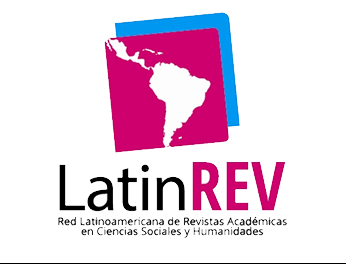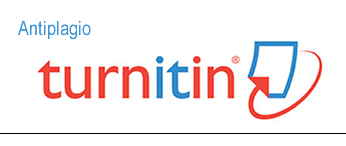Autoeficacia informática y actitudes hacia la tecnología como predictores de la ansiedad tecnológica en estudiantes de nivel secundario
Resumen
Mediante un diseño empírico, cuantitativo, no experimental, transver- sal y causal-comparativo, utilizando un análisis de modelos de ecuaciones estructurales, esta investigación procuró determinar si había una bondad de ajuste aceptable entre el modelo empírico y el teórico, según el cual las actitudes hacia la tecnología, mediadas por la autoeficacia, afectan el nivel de ansiedad tecnológica, en 169 estudiantes de 6º a 8º grados en un grupo de escuelas de gestión privada de una zona de Nueva York, duran- te el curso escolar 2021-2022, quienes completaron un cuestionario que recogía información sobre su actitud hacia la tecnología, su autoeficacia informática y su ansiedad hacia el uso de la tecnología. Se observó que la variable latente exógena actitud del estudiante hacia la tecnología impacta directamente sobre la autoeficacia informática de los estudiantes. La actitud de los estudiantes tiene efectos directo e indirecto sobre su ansiedad al usar la tecnología, con la autoeficacia informática como variable mediadora. La autoeficacia informática de los estudiantes también tiene un efecto negati- vo significativo sobre su ansiedad tecnológica. Se encontró un buen ajuste entre las matrices de covarianza teóricas y empíricas, lo que indica que los datos se ajustan al modelo hipotetizado.
Descargas
Citas
Abdous, M. (2019). Influence of satisfaction and preparedness on online students’ feelings of anxiety. The Internet and Higher Education, 41, 34–44. https://doi.org/10.1016/j.iheduc.2019.01.001 DOI: https://doi.org/10.1016/j.iheduc.2019.01.001
Abdullah, Z. D., Ziden, A. B. A., Aman, R. B. C. y Mustafa, K. I. (2015). Students’ attitudes towards information technology and the relationship with their academic achievement. Contemporary Educational Technology, 6(4), 338–354. https://doi.org/10.30935/cedtech/6158 DOI: https://doi.org/10.30935/cedtech/6158
Abramova, S. B. y Antonova, N. L. (2020). Online learning: New circuits of student fears and worries during the pandemic. https://www.semanticscholar.org/paper/Online-Learning%3A-New-Circuits-of- Student-Fears-and-Abramova-Antonova/c42448c149b71426af489f4bb2a579adc33fe465#citing-papers
Akbarov, A., Gönen, K. y Aydoğan, H. (2018). Students’ attitudes toward blended learning in EFL context. Acta Didactica Napocensia, 11(1), 61–68. https://doi.org/10.24193/adn.11.1.5 DOI: https://doi.org/10.24193/adn.11.1.5
Akpan, I. F. (2018). Computer anxiety, computer self-efficacy and attitude towards internet among secondary school students in Akwa Ibom State, Nigeria. American Journal of Educational Research, 6(11), 1455–1459. https://doi.org/10.12691/education-6-11-2
Alsalhi, N., Eltahir, M. E. y Al-Qatawneh, S. S. (2019). The effect of blended learning on the achievement of ninth grade students in science and their attitudes towards its use. Heliyon, 5, e02424. https://doi.org/10.1016/j.heliyon.2019.e02424 DOI: https://doi.org/10.1016/j.heliyon.2019.e02424
Andrew, M., Taylorson, J., Langille, D. J., Grange, A. y Williams, N. (2018). Student attitudes towards technology and their preferences for learning tools/devices at two universities in the UAE. Journal of Information Technology Education: Research, 17, 309–344. https://doi.org/10.28945/4111 DOI: https://doi.org/10.28945/4111
Ankiewicz, P. (2019). Perceptions and attitudes of pupils towards technology: In search of a rigorous theoretical framework. International Journal of Technology and Design Education, 29(1), 37–56. https://doi.org/10.1007/s10798-017-9434-z DOI: https://doi.org/10.1007/s10798-017-9434-z
Ardies, J., De Maeyer, S., Gijbels, D. y van Keulen, H. (2015). Students attitudes towards technology. International Journal of Technology and Design Education, 25(1), 43–65. https://doi.org/10.1007/s10798-014-9268-x DOI: https://doi.org/10.1007/s10798-014-9268-x
Awofala, A. O., Olabiyi, O. S., Awofala, A. A., Arigbabu, A. A., Fatade, A. O. y Udeani, U. N. (2019). Attitudes toward computer, computer anxiety and gender as determinants of pre-service science, technology and mathematics teachers’ computer self-efficacy. Digital Education Review, 36, 51–67. https://doi.org/10.1344/der.2019.36.51-67 DOI: https://doi.org/10.1344/der.2019.36.51-67
Bandura, A. (1986). The explanatory and predictive scope of self-efficacy theory. Journal of Social and Clinical Psychology, 4(1), 359–573. https://doi.org/10.1521/jscp.1986.4.3.359 DOI: https://doi.org/10.1521/jscp.1986.4.3.359
Bandura, A. (Ed.). (1995). Self-efficacy in changing societies. Cambridge University Press. DOI: https://doi.org/10.1017/CBO9780511527692
Beckers, J. J. y Schmidt, H. G. (2001). The structure of computer anxiety: A six-factor model. Computers in Human Behavior, 17(1), 35–49. https://doi.org/10.1016/S0747-5632(00)00036-4 DOI: https://doi.org/10.1016/S0747-5632(00)00036-4
Bentler, P. M. (2005). EQS 6 Structural equations program manual. Multivariate Software.
Beran, T. N. y Violato, C. (2010). Structural equation modeling in medical research: A primer. BMC Research Notes, 3(1), 267. https://doi.org/10.1186/1756-0500-3-267 DOI: https://doi.org/10.1186/1756-0500-3-267
Boser, R. A., Daugherty, M. K. y Palmer, J. D. (1998). Students’ attitudes toward technology in selected technology education programs. Journal of Technology Education, 10(1), 4–19. https://doi.org/10.21061/jte.v10i1.a.1 DOI: https://doi.org/10.21061/jte.v10i1.a.1
Bradley, R. L., Browne, B. L. y Kelley, H. M. (2017). Examining the influence of self-efficacy and self- regulation in online learning. College Student Journal, 51(4), 518-531. https://www.ingentaconnect.com/contentone/prin/csj/2017/00000051/00000004/art00008
Byrne, B. M. (1998). Structural equation modeling with Lisrel, Prelis, and Simplis: Basic concepts, applications, and programming. Taylor & Francis.
Cazan, A.-M., Cocoradă, E. y Maican, C. I. (2016). Computer anxiety and attitudes towards the computer and the internet with Romanian high-school and university students. Computers in Human Behavior, 55(A), 258–267. https://doi.org/10.1016/j.chb.2015.09.001 DOI: https://doi.org/10.1016/j.chb.2015.09.001
Celik, V. y Yeşilyurt, E. (2013). Attitudes to technology, perceived computer self-efficacy and computer anxiety as predictors of computer supported education. Computers & Education, 60(1), 148–158. https://doi.org/10.1016/j.compedu.2012.06.008 DOI: https://doi.org/10.1016/j.compedu.2012.06.008
Chien, T.-C. (2008, 20 a 24 de febrero). Factors influencing computer anxiety and its impact on e-learning effectiveness: A review of Literature [Ponencia]. Academy of Human Resource Development International Research Conference in the Americas, Panama. https://eric.ed.gov/?id=ED501623
Dai, D. y Xia, X. (2020). Whether the school self-developed e-learning platform is more conducive to learning during the covid-19 pandemic? Best Evidence of Chinese Education, 5(1), 569–580. https://doi.org/10.15354/bece.20.ar030 DOI: https://doi.org/10.15354/bece.20.ar030
Davies, R. S. y West, R. E. (2014). Technology integration in schools. En J. M. Spector, M. D. Merrill, J. Elen y M. J. Bishop (Eds.), Handbook of research on educational communications and technology (4a ed., pp. 841–853). Springer. https://lidtfoundations.pressbooks.com/chapter/tech-integration-from-bates/ DOI: https://doi.org/10.1007/978-1-4614-3185-5_68
De Bruyckere, P., Kirschner, P. A. y Hulshof, C. D. (2016). Technology in education: What teachers should know. American Educator, 40(1), 12–18, 43. https://www.aft.org/ae/spring2016/debruyckere_kirschner_hulshof
Dewey, C. (2015, 21 de octubre). Attitudes that foster success in Christian education. BJU Press. https://www.bjupress.com/resources/articles/t2t/attitudes-that-foster-success.php
Escueta, M., Quan, V., Nickow, A. J. y Oreopoulos, P. (2017). Education technology: An evidence-based review. National Bureau of Economic Research Working, Paper No. 23744. https://www.nber.org/system/files/working_papers/w23744/w23744.pdf DOI: https://doi.org/10.3386/w23744
Eyyam, R. y Yaratan, H. (2014). Impact of use of technology in mathematics lessons on student achievement and attitudes. Journal of Social Behavior and Personality, 42(1), 31–42. https://doi.org/10.2224/sbp.2014.42.0.S31 DOI: https://doi.org/10.2224/sbp.2014.42.0.S31
Fawaz, M. y Samaha, A. (2021). E‐learning: Depression, anxiety, and stress symptomatology among Lebanese university students during COVID‐19 quarantine. Nursing Forum, 56(1), 52–57. https://doi.org/10.1111/nuf.12521 DOI: https://doi.org/10.1111/nuf.12521
García, E. y Weiss, E. (2020). COVID-19 and student performance, equity, and U.S. education policy. Economic Policy Institute.
García-Adasme, S. I. y López-Escobar, A. (2021). Children living a global pandemic: Anxiety repercussions. En F. Gabrielli y F. Irtelli (Eds.), Anxiety, uncertainty, and resilience during the pandemic period. IntechOpen. https://doi.org/10.5772/intechopen.98212 DOI: https://doi.org/10.5772/intechopen.98212
Glover, J., Ariefdjohan, M. y Fritsch, S. L. (2022). Kids anxiety and the digital world. Child and Adolescent Psychiatric Clinics of North America, 31(1), 71-90. https://doi.org/10.1016/j.chc.2021.06.004 DOI: https://doi.org/10.1016/j.chc.2021.06.004
Gorhan, M. F., Oncu, S. y Senturk, A. (2014). Tablets in education: Outcome expectancy and anxiety of middle school students. Educational Sciences: Theory & Practice, 14(6), 2259–2271. https://doi.org/10.12738/estp.2014.6.2230 DOI: https://doi.org/10.12738/estp.2014.6.2230
Guarneros Olmos, F. (2022, 31 de mayo). Las EdTech seguirán creciendo, pero ahora gracias a las empresas. Expansión. https://expansion.mx/tecnologia/2022/05/31/las-edtech-seguiran-creciendo- pero-ahora-gracias-a-las-empresas
Guido, R. M. D. (2013). Attitude and motivation towards learning physics. International Journal of Engineering Research, 2(11), 2087–2094. https://arxiv.org/ftp/arxiv/papers/1805/1805.02293.pdf
Hauser, R., Paul, R. y Bradley, J. (2012). Computer self-efficacy, anxiety, and learning in online versus face to face medium. Journal of Information Technology Education: Research, 11, 141–154. https://doi.org/10.28945/1633 DOI: https://doi.org/10.28945/1633
Heinssen, R. K., Glass, C. R. y Knight, L. A. (1987). Assessing computer anxiety: Development and validation of the Computer Anxiety Rating Scale. Computers in Human Behavior, 3(1), 49–59. https://doi.org/10.1016/0747-5632(87)90010-0 DOI: https://doi.org/10.1016/0747-5632(87)90010-0
Herold, B. (2016, 5 de febrero). Technology in education: An overview. Education Week. https://www.edweek.org/technology/technology-in-education-an-overview/2016/02
Higgins, K., Huscroft-D’Angelo, J. y Crawford, L. (2019). Effects of technology in mathematics on achievement, motivation, and attitude: Meta-analysis. Journal of Educational Computing Research, 57(2), 283–319. https://doi.org/10.1177/0735633117748416 DOI: https://doi.org/10.1177/0735633117748416
Hooper, D., Coughlan, J. y Mullen, M. (2008). Structural equation modelling: Guidelines for determining model fit. Electronic Journal of Business Research Methods, 6(1), 53–60. https://doi.org/10.21427/D7CF7R
Hu, L. y Bentler, P. M. (1999). Cutoff criteria for fit indexes in covariance structure analysis: Conventional criteria versus new alternatives. Structural Equation Modeling: A Multidisciplinary Journal, 6(1), 1–55. https://doi.org/10.1080/10705519909540118 DOI: https://doi.org/10.1080/10705519909540118
Huerta Wong, J. E. y Espinoza Montiel, R. (2012). Introducción a los modelos de ecuaciones estructurales con AMOS: Aplicaciones con la EMOVI. https://es.slideshare.net/EnriqueHuerta1/taller-de-ecuaciones-estructurales
Karataş, İ., Tunc, M. P., Yılmaz, N. y Karaci, G. (2017). An investigation of technological pedagogical content knowledge, self-confidence, and perception of pre-service middle school mathematics teachers towards instructional technologies. Educational Technology and Society, 20(3), 122–132. https://doi.org/10.30191/ETS.201707_20(3).0010
Katsarou, E. (2021). The effects of computer anxiety and self-efficacy on l2 learners’ self-perceived digital competence and satisfaction in higher education. Journal of Education and E-Learning Research, 8(2), 158–172. https://doi.org/10.20448/journal.509.2021.82.158.172 DOI: https://doi.org/10.20448/journal.509.2021.82.158.172
Kline, R. B. (2005). Principles and practice of structural equation modeling (2a ed.). Guilford Press. Lederman, N. G. y Niess, M. L. (2000). Technology for technology’s sake or for the improvement of teaching and learning? School Science and Mathematics, 100(7), 345–348. https://doi.org/10.1111/j.1949-8594.2000.tb18175.x DOI: https://doi.org/10.1111/j.1949-8594.2000.tb18175.x
Linnenbrink, E. A. y Pintrich, P. R. (2003). The role of self-efficacy beliefs in student engagement and learning in the classroom. Reading and Writing Quarterly, 19(2), 119–137. https://doi.org/10.1080/10573560308223 DOI: https://doi.org/10.1080/10573560308223
MacCallum, R. C. y Austin, J. T. (2000). Applications of structural equation modeling in psychological research. Annual Review of Psychology, 51(1), 201–226. https://doi.org/10.1146/annurev.psych.51.1.201 DOI: https://doi.org/10.1146/annurev.psych.51.1.201
Magen-Nagar, N. y Shonfeld, M. (2018). The impact of an online collaborative learning program on students’ attitude towards technology. Interactive Learning Environments, 26(5), 621–637. https://doi.org/10.1080/10494820.2017.1376336 DOI: https://doi.org/10.1080/10494820.2017.1376336
Mahato, B. y Jangir, S. (2012). A study on academic anxiety among adolescents of Minicoy Island. International Journal of Science and Research, 1(1), 12–14. https://www.ijsr.net/getabstract.php?paperid=IJSR12120318
Malkanthie, A. (2015). Structural equation modeling with Amos. Nippon Graphics.
Marqués, S. (2023, 27 de julio). Unesco advierte del riesgo de llevar la tecnología a las aulas sin estrategia, sin control y con las empresas al volante. Magisterio. https://www.magisnet.com/2023/07/unesco-advierte- del-riesgo-de-llevar-la-tecnologia-a-las-aulas-sin-estrategia-sin-control-y-con-las-empresas-al-volante/
Marsh, H. W. y Hau, K.-T. (1996). Assessing goodness of fit: Is parsimony always desirable? The Journal of Experimental Education, 64(4), 364–390. https://doi.org/10.1080/00220973.1996.10806604 DOI: https://doi.org/10.1080/00220973.1996.10806604
Martin, F., Gezer, T. y Wang, C. (2019). Educators’ perception of student digital citizenship practices. Computers in the Schools, 36(4), 238-254. https://doi.org/10.1080/07380569.2019.1674621 DOI: https://doi.org/10.1080/07380569.2019.1674621
Mata, M. L., Monteiro, V. y Peixoto, F. (2012). Attitudes towards mathematics: Effects of individual, motivational, and social support factors. Child Development Research, 2012, 1–10. https://doi.org/10.1155/2012/876028 DOI: https://doi.org/10.1155/2012/876028
Olivier, E., Archambault, I., Clercq, M. y Galand, B. (2019). Student self-efficacy, classroom engagement, and academic achievement: Comparing three theoretical frameworks. Journal of Youth and Adolescence, 48(2), 326–340. https://doi.org/10.1007/s10964-018-0952-0 DOI: https://doi.org/10.1007/s10964-018-0952-0
Onyema, E. M., Eucheria, N. C., Obafemi, F. A., Sen, S., Atonye, F. G., Sharma, A. y Alsayed, A. O. (2020). Impact of coronavirus pandemic on education. Journal of Education and Practice, 11(13), 108–121. https://doi.org/10.7176/JEP/11-13-12 DOI: https://doi.org/10.7176/JEP/11-13-12
Osalusi, A. M. y Awujoola, O. A. (2021). Computer anxiety and use of open education resources by distance learning students in two universities in Oyo State, Nigeria. International Journal of Educational Benchmark, 18(2). https://benchmarkjournals.com/wp-content/uploads/2021/07/7.pdf
Oye, N. D., Iahad, A. y Ab Rahim, N. (2012). Computer self-efficacy, anxiety and attitudes towards use of technology among university academicians: A case study of University of Port Harcourt—Nigeria. International Journal of Computer Science and Technology, 3(1), 213–219. http://www.ijcst.com/vol31/2/oye.pdf
Pace, C., Pettit, S. K. y Barker, K. S. (2020). Best practices in middle level quaranteaching: Strategies, tips and resources amidst COVID-19. Becoming: Journal of the Georgia Middle School Association, 31(1), Artículo 2. https://doi.org/10.20429/becoming.2020.310102 DOI: https://doi.org/10.20429/becoming.2020.310102
Park, H. (2021). The role of technology in anxiety and depression during the COVID pandemic. Eximia Journal, 2(1), 27-35. https://ideas.repec.org/a/tec/eximia/v2y2021i1p27-35.html
Perrotta, G. (2019). Anxiety disorders: Definitions, contexts, neural correlates and strategic therapy. Jacobs Journal of Neurology and Neuroscience, 6(1), Artículo 042. https://www.academia.edu/42029231/Anxiety_disorders_definitions_contexts_neural_correlates_and_strategic_therapy
Pintrich, P. R., Smith, D. A. F., Garcia, T. y Mckeachie, W. J. (1993). Reliability and predictive validity of the Motivated Strategies for Learning Questionnaire (MSLQ). Educational and Psychological Measurement, 53(3), 801–813. https://doi.org/10.1177/0013164493053003024 DOI: https://doi.org/10.1177/0013164493053003024
Ritzhaupt, A. D., Dawson, K. y Cavanaugh, C. (2012). An investigation of factors influencing student use of technology in K-12 classrooms using path analysis. Journal of Educational Computing Research, 46(3), 229–254. https://doi.org/10.2190/EC.46.3.b DOI: https://doi.org/10.2190/EC.46.3.b
Samuel, S. (1990). Math anxiety: Helping students learn to succeed. The Journal of Adventist Education, 52(2), 17–19. http://circle.adventist.org/files/jae/en/jae198952021703.pdf
Sarmah, D. y Das, G. C. (2020). An investigation of students’ attitude towards learning mathematics in digital and traditional classroom: A study of secondary students in Guwahati city. Turkish Journal of Computer and Mathematics Education, 11(03), 1016–1034. https://turcomat.org/index.php/turkbilmat/article/view/10170
Schlebusch, C. L. (2018). Computer anxiety, computer self-efficacy and attitudes towards the internet of first year students at a South African University of Technology. Africa Education Review, 15(3), 72–90. https://doi.org/10.1080/18146627.2017.1341291 DOI: https://doi.org/10.1080/18146627.2017.1341291
Schumacker, R. E. y Lomax, R. G. (2010). A beginner’s guide to structural equation (3a. ed.). Routledge Taylor & Francis.
Schunk, D. y Mullen, C. (2012). Self-efficacy as an engaged learner. En S. L. Christenson, A. L. Reschly y C. Wylie (Eds.), Handbook of Research on Student Engagement (pp. 219–235). Springer. https://doi.org/10.1007/978-1-4614-2018-7_10 DOI: https://doi.org/10.1007/978-1-4614-2018-7_10
Şenel, E. (2016). Foreign language anxiety of students studying English language and literature: A sample from Turkey. Educational Research and Reviews, 11(6), 219–228. https://doi.org/10.5897/ERR2015.2507 DOI: https://doi.org/10.5897/ERR2015.2507
Shah, M. M., Hassan R. y Embi, R. (2012). Technology acceptance and computer anxiety. En 2012 International Conference on Innovation Management and Technology Research (pp. 306–309). IEEE. https://doi.org/10.1109/ICIMTR.2012.6236408 DOI: https://doi.org/10.1109/ICIMTR.2012.6236408
Shakir, M. (2014). Academic anxiety as a correlate of academic achievement. Journal of Education and Practice, 5(10), 29–36. https://www.iiste.org/Journals/index.php/JEP/article/view/12335
Simsek, A. (2011). The relationship between computer anxiety and computer self-efficacy. Contemporary Educational Technology, 2(3), 177–187. https://doi.org/10.30935/cedtech/6052 DOI: https://doi.org/10.30935/cedtech/6052
Soh, T. M. T., Arsad, N. M. y Osman, K. (2010). The relationship of 21st century skills on students’ attitude and perception towards physics. Procedia - Social and Behavioral Sciences, 7(C), 546–554. https://doi.org/10.1016/j.sbspro.2010.10.073 DOI: https://doi.org/10.1016/j.sbspro.2010.10.073
Sultan, S. y Kanwal, F. (2017). Personal attributes contributing to computer anxiety and computer self- efficacy among distance learners. Bulletin of Education and Research, 39(1), 33–44. http://pu.edu.pk/images/journal/ier/PDF-FILES/3_39_1_17.pdf
Svenningsson, J., Höst, G., Hultén, M. y Hallström, J. (2022). Students’ attitudes toward technology: Exploring the relationship among affective, cognitive and behavioral components of the attitude construct. International Journal of Technology and Design Education, 32(3), 1531–1551. https://doi.org/10.1007/s10798-021-09657-7 DOI: https://doi.org/10.1007/s10798-021-09657-7
Tabachnick, B. G. y Fidell, L. S. (2007). Using multivariate statistics (5a ed.). Pearson College. Torkzadeh, G. y Koufteros, X. (1994). Factorial validity of a Computer Self-Efficacy Scale and the impact of computer training. Educational and Psychological Measurement, 54(3), 813–821. https://doi.org/10.1177/0013164494054003028 DOI: https://doi.org/10.1177/0013164494054003028
Walker, B. J. (2003). The cultivation of student self-efficacy in reading and writing. Reading & Writing Quarterly, 19(2), 173–187. https://doi.org/10.1080/10573560308217 DOI: https://doi.org/10.1080/10573560308217
Williams, T. y Williams, K. (2010). Self-efficacy and performance in mathematics: Reciprocal determinism in 33 nations. Journal of Educational Psychology, 102(2), 453–466. https://doi.org/10.1037/a0017271 Xiong, B., Skitmore, M. y Xia, B. (2015). A critical review of structural equation modeling applications in construction research. Automation in Construction, 49, 59–70. https://doi.org/10.1016/j.autcon.2014.09.006 DOI: https://doi.org/10.1016/j.autcon.2014.09.006
Zeidner, M. y Matthews, G. (2010). Anxiety 101. Springer. DOI: https://doi.org/10.1016/B978-0-08-044894-7.00599-6
Zhou, L. y Li, F. (2020). A review of the largest online teaching in China for elementary and middle school students during the COVID-19 pandemic. Best Evidence of Chinese Education, 5(1), 549–567. https://doi.org/10.15354/bece.20.re040 DOI: https://doi.org/10.15354/bece.20.re040











